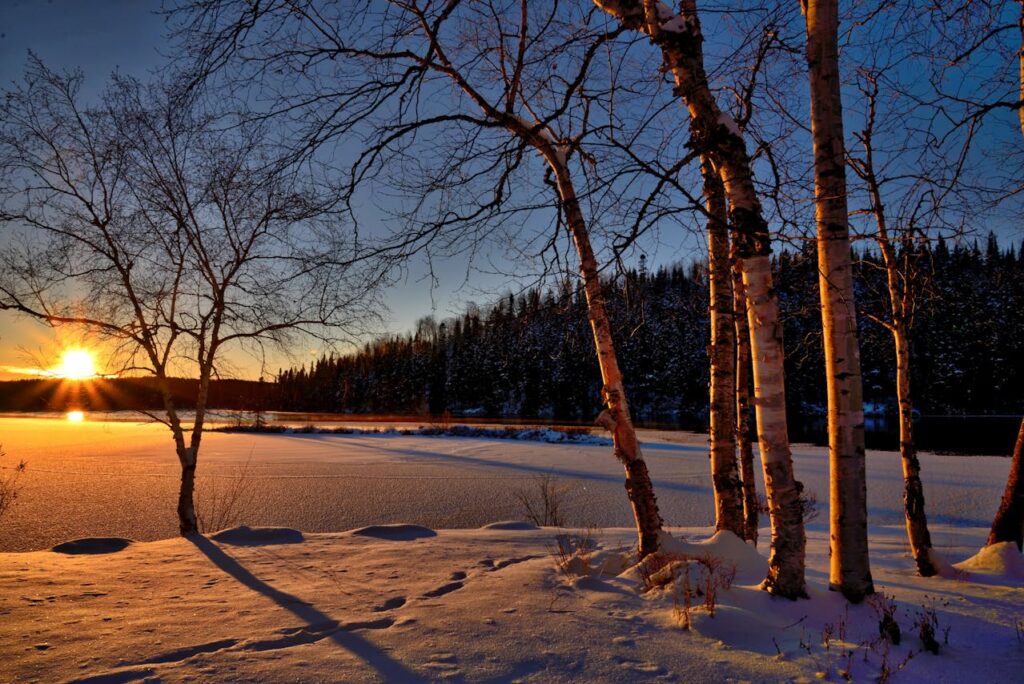A winter weather advisory issued for northern minnesota and northwest Wisconsin, so please take note, residents and travellers. It’s critical to be aware and organised as the area gets ready for the upcoming weather. This alert is an important reminder to take the required safety precautions in order to minimise interruptions and ensure safety from potentially severe winter weather. This post will explain what a winter weather advisory means, what to expect, and what actionable steps you can do to make the most of this weather event. To remain ahead of the winter weather challenges that our community faces, let’s get into the specifics.
The Winter Weather Advisory issued for Northern Minnesota and Northwest Wisconsin and its effects.
A winter weather advisory issued for Northwest Minnesota and Northern Wisconsin. The possible threats presented by the expected conditions should be recognised by both residents and travellers. Dangerous driving conditions, such as slick roads and poor visibility, are among the main issues since they raise the possibility of accidents and cause delays in travel.
Possible Dangers
A winter weather advisory was issued for Northwest Wisconsin and Northern Minnesota. draws attention to a number of possible risks for which locals and visitors should be ready. Driving becomes dangerous when there are icy road conditions, which can be caused by melted snow or freezing rain refreezing on surfaces. Another risk that raises the possibility of accidents is reduced visibility brought on by blowing snow or fog, particularly on rural and highway routes. In addition, if people are not appropriately clothed for the weather, the frigid temperatures that accompany winter weather systems can result in frostbite or hypothermia. To guarantee their safety throughout the alert period, residents in the impacted areas must take the necessary steps and treat these potential threats carefully.
Anticipated Snowfall and Build-Up
The anticipated snowfall and accumulations are a crucial component of the winter weather advisory for Northwest Wisconsin and Northern Minnesota. Forecasts from meteorologists indicate how much snow is predicted to fall in a specific amount of time, allowing authorities and locals to make the necessary preparations. Numerous risks might arise with heavy snowfall, such as decreased vision, trouble driving, and the possibility of power outages brought on by snow-covered branches falling on power lines. People can reduce the dangers connected with winter weather conditions by planning their travels and outdoor activities wisely and being updated about forecast snowfall volumes and accumulations.
Precautionary Steps for Locals and Visitors
For Northern Minnesota and Northwest Wisconsin, a winter weather advisory was issued. Precautionary steps should be taken by locals and visitors to guarantee their safety and wellbeing. Keeping abreast with local authorities’ advisory notices and weather forecasts is one crucial measure. By using this information, people can make more informed plans for their activities and prevent needless travel during dangerous conditions.
Tips for Outdoor Activity Safety
During a winter weather alert, exercising outside calls for extra vigilance to prevent potential hazards. People should dress appropriately for the weather by layering clothing and wearing insulated boots, hats, gloves, and other winter accessories when they go outside. Furthermore, in order to avoid fatigue or frostbite, it’s critical to drink plenty of water and to stop often. It’s important to abide by safety regulations and stay in specified locations when engaging in recreational sports like skiing or snowboarding.
Road conditions and travel advisories
Before starting any excursions, travellers in Northern Minnesota and Northwest Wisconsin should keep a close eye on travel advisories and road conditions. Roadways may become dangerous during a winter weather advisory because of ice and snow buildup, poor visibility, and slick conditions. It is advisable to drive carefully, especially on untreated roads or bridges, and to verify the most recent updates from the local transportation authorities. If you must travel, try delaying non-essential travel until the weather becomes better. If you must go, give yourself more time to get to your destination safely. To further prevent accidents, slow down, stay a safe distance behind other cars, and refrain from making abrupt movements. Travellers can make safer and more efficient travel arrangements during winter weather by being aware and cautious.
Efforts in Community Response and Preparedness
in reaction winter weather advisory issued for northern minnesota and northwest wisconsin. To safeguard the security and welfare of their citizens, local communities are preparing and mobilising their resources. Emergency services, including police, fire, and medical personnel, are prepared to respond to any emergencies resulting from inclement weather by being on high alert.
Resources and Services for Emergencies
Residents of Northern Minnesota and Northwest Wisconsin can depend on a number of emergency services and resources to help them during this time as the winter weather advisory goes into effect. To help residents in need, emergency hotlines and helplines may be set up to offer information and support.
Action Plans for Local Governments
Local governments in Northwest Wisconsin and Northern Minnesota are putting action plans into place to deal with the possible effects of the bad weather ahead of the winter weather alert. Action plans could involve things like pre-treating roads with salt or brine solutions to minimise ice buildup, dispatching snow removal personnel to clear sidewalks and roads, and working with utility companies to handle potential power outages.
Observation and Reports on the Winter Weather Conditions
Considering that winter weather advisory issued for northern minnesota and northwest wisconsin. It’s critical to keep up with the changing weather conditions. In order to make educated judgements and take the appropriate precautions, homeowners and travellers must keep track of and receive updates on the winter weather situation. The sources and techniques for getting official alerts, notifications, and meteorological updates regarding the current winter weather event will be discussed in this section.
Updates on the weather
People can better grasp the severity and possible consequences of the winter weather advisory by using meteorological updates, which offer insightful information on the current and predicted weather. Meteorologists estimate variables like snowfall volumes, wind speeds, and temperature swings using sophisticated forecasting techniques and data from weather models. Usually, a variety of venues are used to distribute this information, such as social media sites, smartphone apps, weather websites, and local news broadcasts. Residents and visitors can stay up to date on the most recent events and make well-informed judgements about their plans and activities by routinely checking for weather updates.
Official Notifications and Alerts
During a winter weather advisory, government alerts and notifications are crucial in disseminating safety instructions and crucial information to the public, alongside meteorological updates. Local law enforcement, emergency management organisations, and federal agencies in charge of public safety are the entities that release these alerts. They might contain alerts regarding dangerous road conditions, closings of schools, openings of shelters, and other pertinent data. Public announcements and alerts are usually disseminated via multiple means, including text messaging, email alerts, emergency alert systems, and social networking sites. Residents and travellers can reduce risks and be safe during the winter weather event by paying attention to these alerts and using the advised safety actions.
In summary
Finally, the winter weather advisory issued for northern minnesota and northwest wisconsin. highlights the need to be prepared and aware of your surroundings when dealing with inclement weather. Residents and travellers can minimise disruptions to everyday routines and guarantee their safety by being proactive in recognising the implications of the advice. Making informed decisions during winter weather events requires keeping an eye on meteorological updates and paying attention to government advisories. Communities may overcome the difficulties presented by cold weather and emerge resilient if they cooperate and adhere to safety requirements. Let’s continue to be watchful and ready for whatever the upcoming winter in our area may bring.
FAQs regarding winter weather advisory issued for northern minnesota and northwest wisconsin.
What does it mean when Northern Minnesota and Northwest Wisconsin are under a winter weather advisory?
When dangerous weather is predicted, residents and travellers are advised to take safety precautions during possible snow, ice, or freezing rain events. This is known as a winter weather advisory for Northern Minnesota and Northwest Wisconsin.
What is the duration of a winter weather advisory?
A winter weather advisory’s duration can vary based on the expected weather, although it usually lasts for 12 to 24 hours.
When there is a winter weather advisory, what safety measures should I take?
When there is a winter weather advisory, it is imperative to stay inside when feasible, dress warmly if you must go outside, avoid making needless travel plans, and assemble an emergency kit with the necessities.
Is it closed during a winter weather alert for businesses and schools?
Depending on local authorities’ judgements and the severity of the conditions, schools and businesses may close during a winter weather advisory. Using official channels to stay updated is advised.
How can I remain up to speed on the most recent information when there is a winter weather advisory?
By keeping an eye on official alerts and notifications from local authorities, as well as meteorological updates from reliable sources like weather websites, mobile applications, and local news broadcasts, you can stay informed.
When a winter weather advisory is in effect, are there any road closures?
Hazardous conditions like snow accumulation, ice, or low visibility can result in road closures. Before departing, it’s crucial to check the status of the roads and any cautions.
In the event of a power loss during a winter weather advisory, what should I do?
If there is a power outage, stay inside and wear warm clothing. When it comes to lighting, choose lanterns that run on batteries or flashlights instead of candles, which can start a fire.
Is it still possible for me to go outside while there is a winter weather advisory?
It is not advised to go outside when there is a winter weather advisory since the weather could be dangerous. If you must go outside, wrap up warmly and take safety measures to keep yourself safe from the elements and slick surfaces.
When a winter weather alert is in effect, how will it impact public transport?
Winter weather can have an impact on public transit, causing delays or cancellations. For updates, check with the local transit authority and adjust your trip schedule appropriately.
When there is a winter weather advisory, how can I assist people that are at risk?
By keeping an eye on elderly neighbours or people with restricted mobility, providing aid with transportation or snow removal, and pointing them in the direction of accessible options like shelters or community support agencies, you may assist vulnerable groups.



